It’s quiet in the woods. The light may comb through the trees in friendly rays, but there is a danger to their warmth. Stay too long basking in solitude and the sun will set, locking you into the vast wilderness that surrounds you.
However, at The Resort at Paws Up in Greenough, Montana, there is little cause for this concern. You won’t get lost here, despite how much you’ll wish you could. Self-described as “The Last Best Place,” the ranch offers 37,000 acres to explore while comfortably tethered to a staff that knows the land as if it were home. With multi-bedroom cabins and creekside tents to rent, think of Paws Up as a high-end camp for the refined kid-at-heart.
I visit just after a fresh batch of snow coats everything in a thick layer of white, and immediately feel welcome—if not a little clumsy. Wearing snowshoes, I follow Chef Sunny Jin, the resort’s executive chef, through an open field toward the Blackfoot River. Along the way, he explains what makes cooking in Montana so unique.
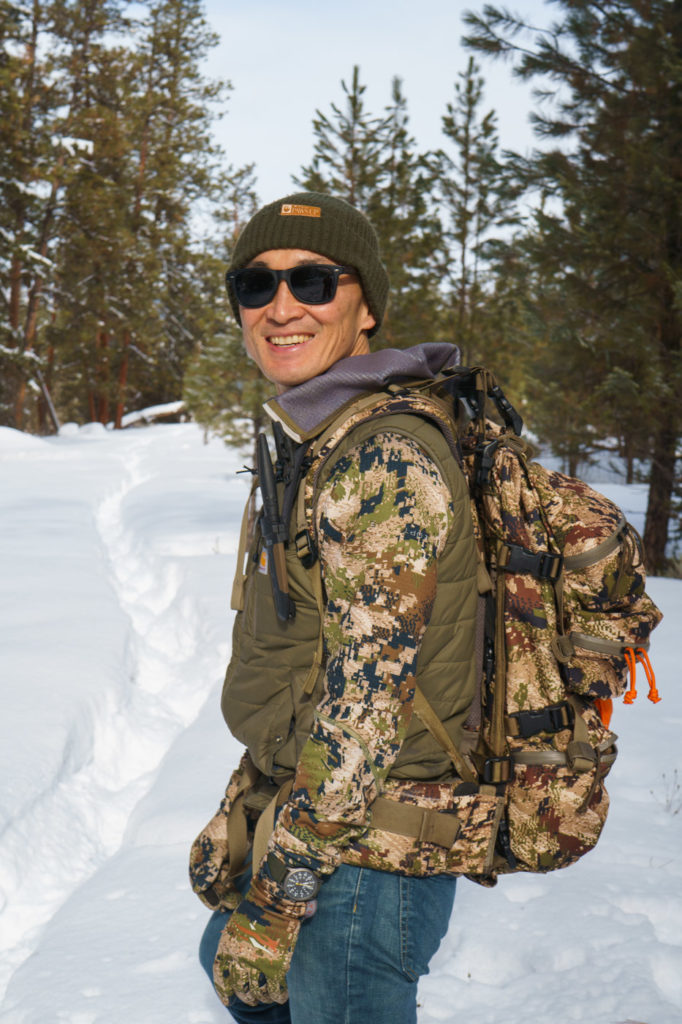
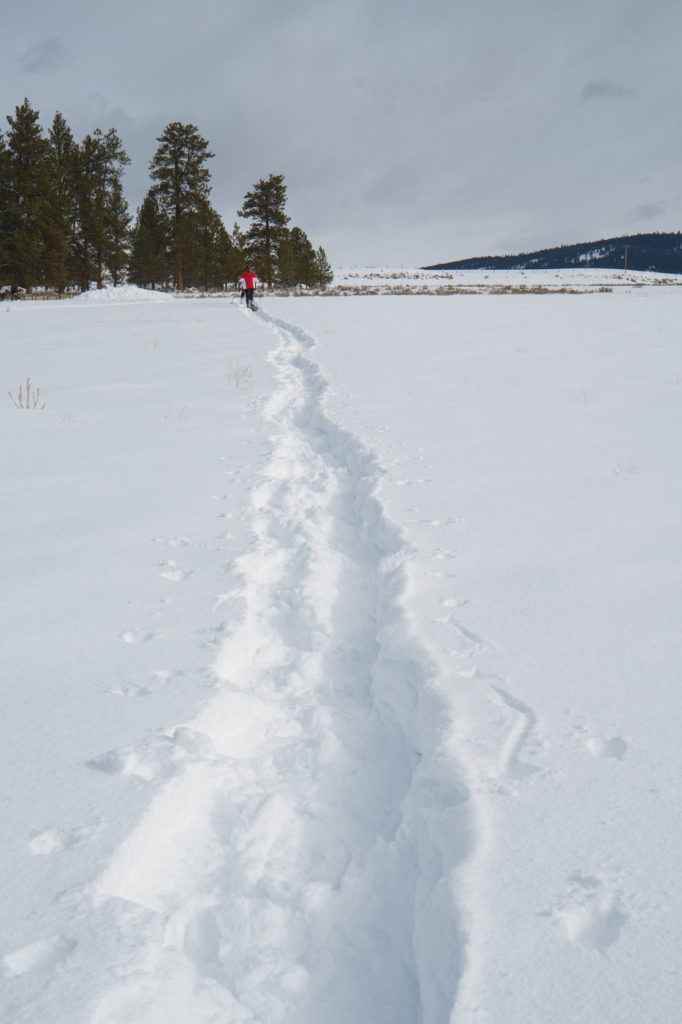
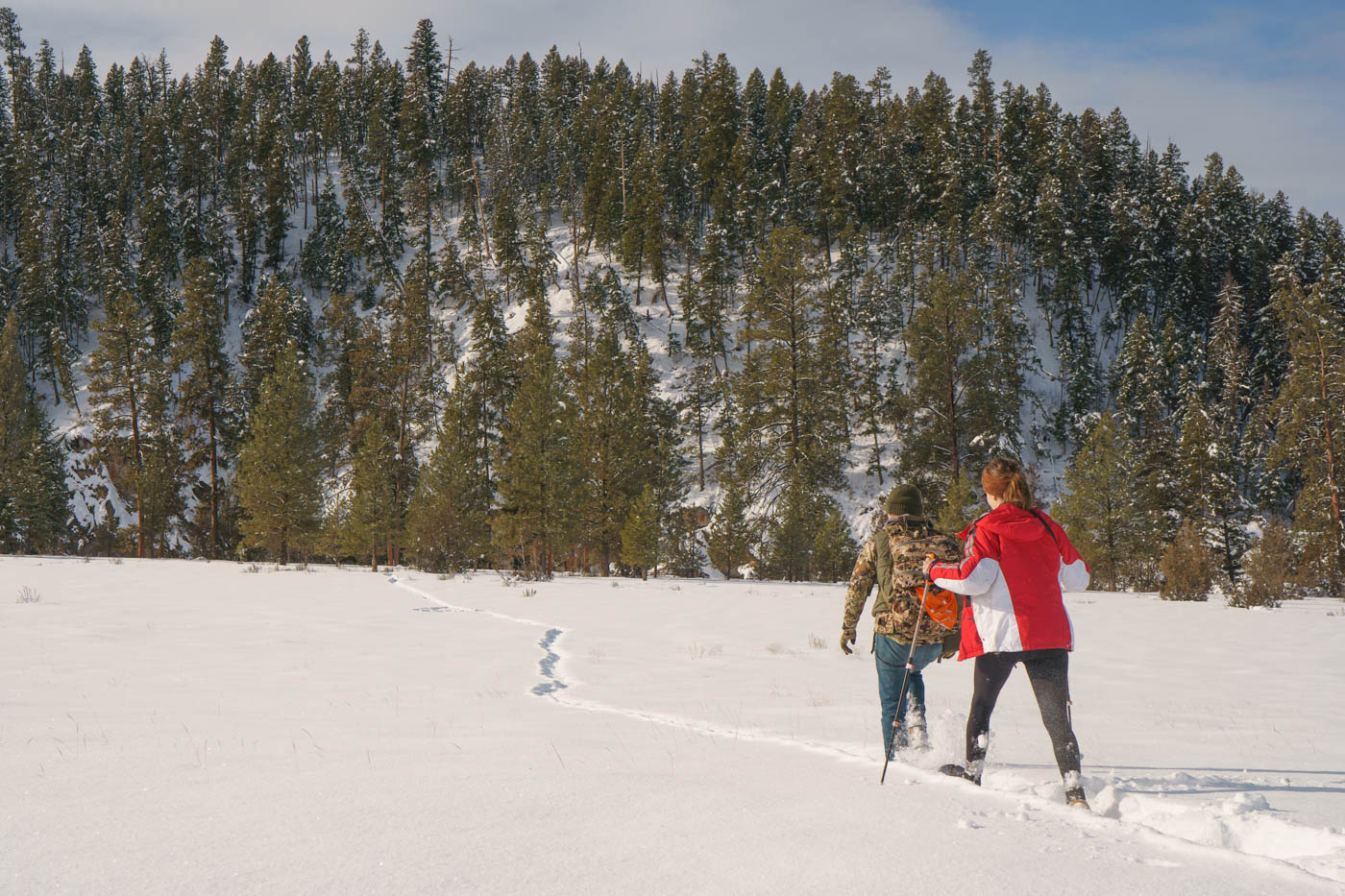
“See this?” Jin points out a leafy baton poking through the snow. “This is wild sage. [At the ranch] we’re working on a smoked bison French dip with sage brush au jus. This is exactly what we’ll use.”
I pick a few leaves and am surprised by how fragrant they are. The earthy, lemony scent seems at odds with the frozen setting of white.
“And then this juniper!” Jin darts over to a pine tree still dotted with berries. “Juniper lends itself really well to a marmalade, jam, or if you want to use it in a brine.” He shuffles through his backpack to find a plastic bag carrying an emergency blanket and hand warmers. He dumps the contents and starts filling it with the plumpest juniper berries he can reach.
After falling in love with Montana on a spontaneous road trip, Jin moved from Portland, Oregon, to Greenough one year ago to work at Paws Up. Having previously worked in Napa Valley’s French Laundry, Catalonia’s El Bulli, and Sydney’s Tetsuya’s, Jin excels within the pressures of a kitchen, but it’s been Montana that’s given him a deeper space to breathe without sacrificing what he loves to do.
“I’ve enjoyed foraging from day one,” he says, remembering spotting nasturtiums in New York City or edible weeds growing through sidewalk cracks. “I’ll go into the woods even if I just have a half day and get lost before coming into work.”
When you’re in a place like Montana, the call to adventure feels essential; Paws Up caters to that. Guests aren’t exactly roughing it—glamping tents come with butlers, heated floors, and private cars to drive around the property—yet, there’s still a distinctly humble feel. After a day filled with cross country skiing, dog-sledding, snowmobiling, or similar summer counterparts, Jin will serve a five-course meal without any hint of pretension. Instead, dishes are filled with thoughtful touches that act as gifts from the land. An example menu includes a starter of Scotch egg with bison chorizo, a saffron risotto with parsnips and maitake mushrooms, an Applewood-smoked bison tenderloin with sweet potato purée, and a Meyer lemon brûlée with wildflower honey meringue.
It’s all in an effort, Jin says, of communicating Montana’s natural abundance to its visitors.
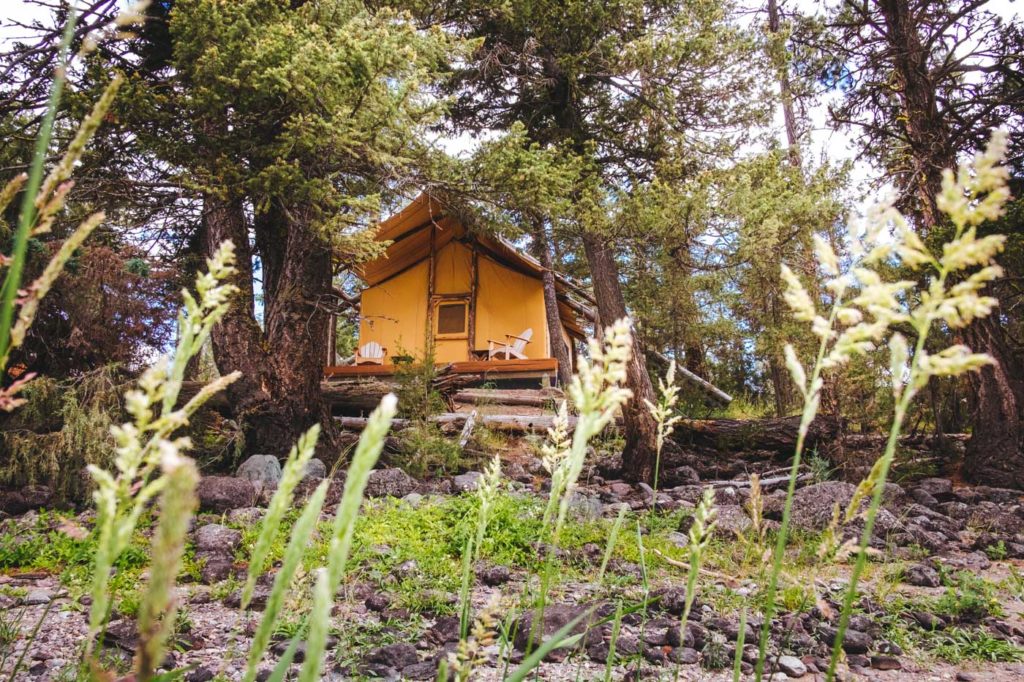
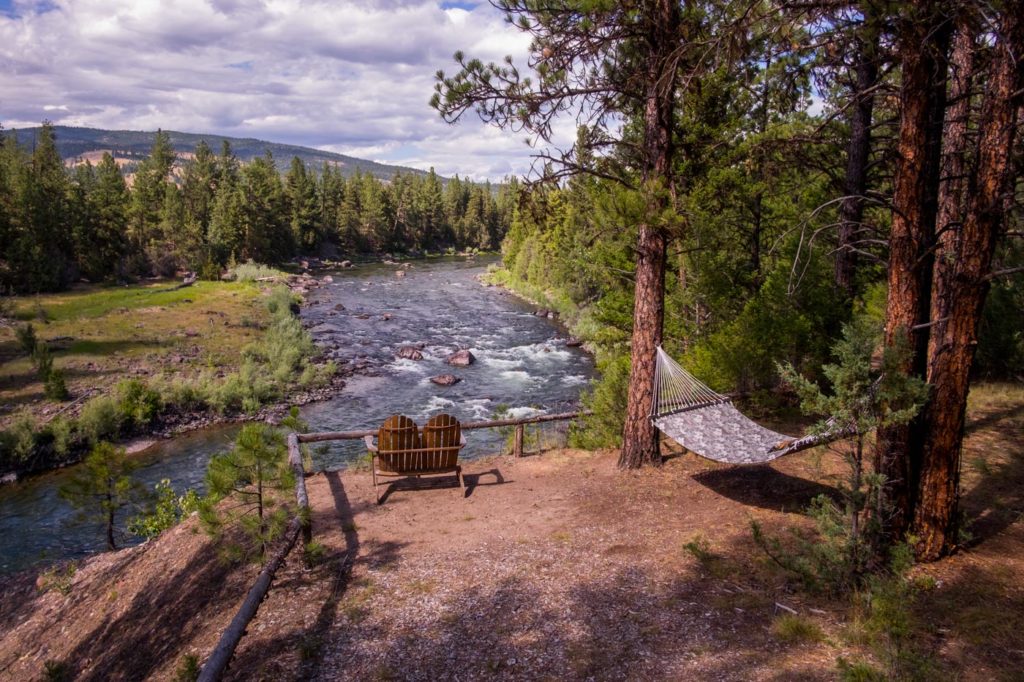
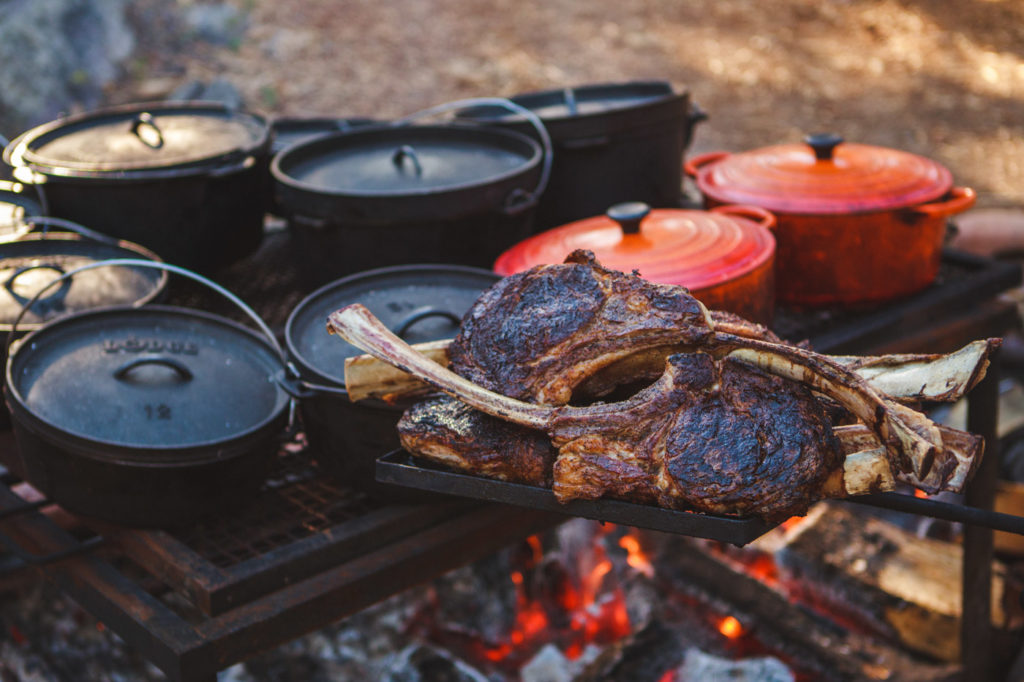
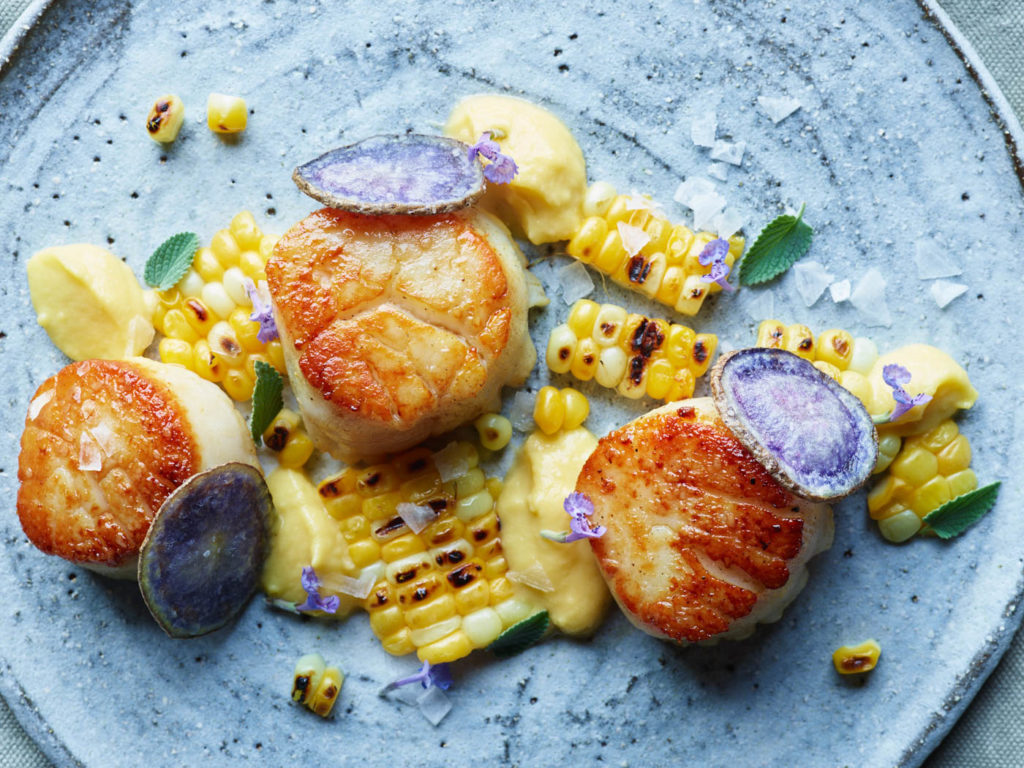
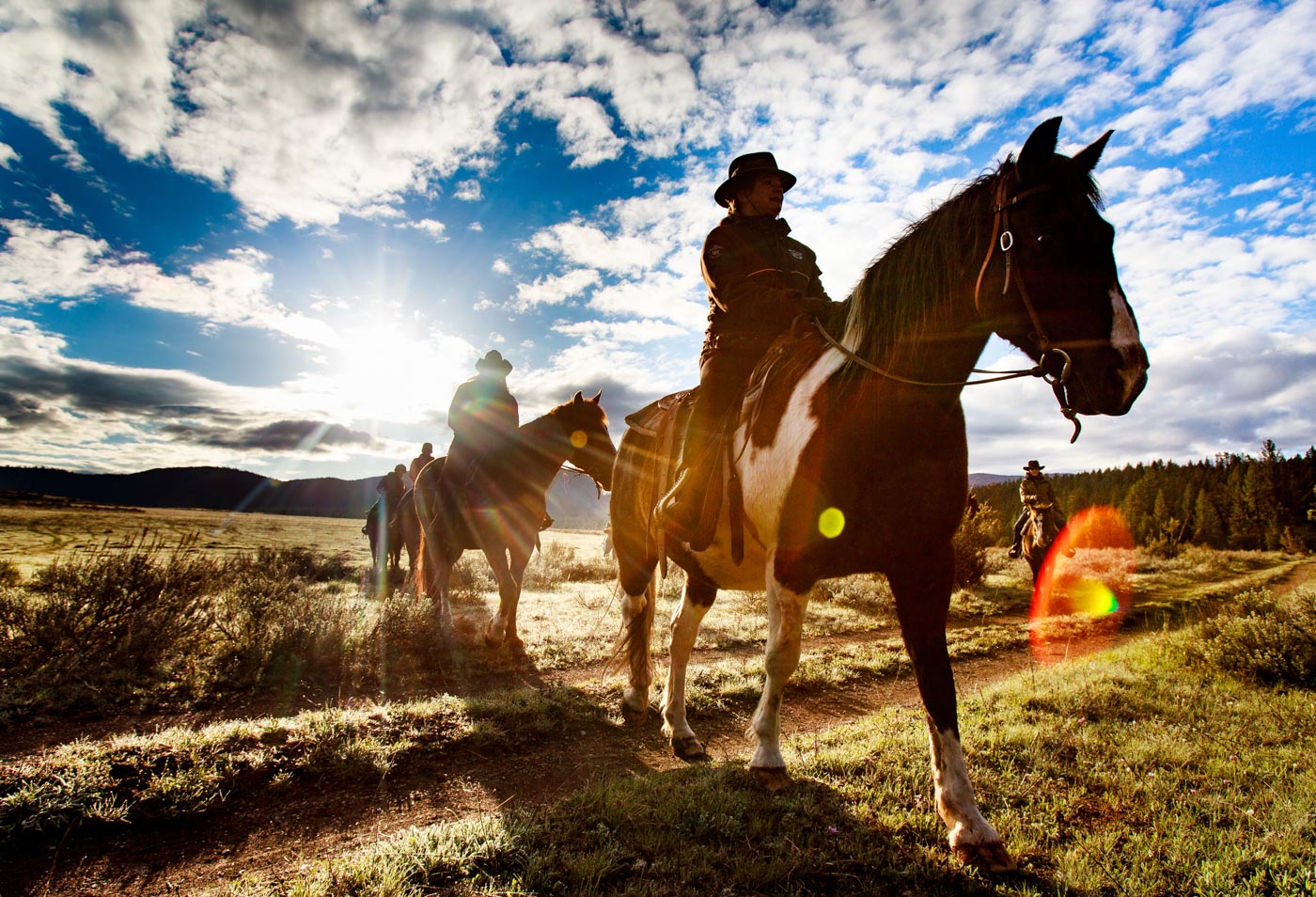
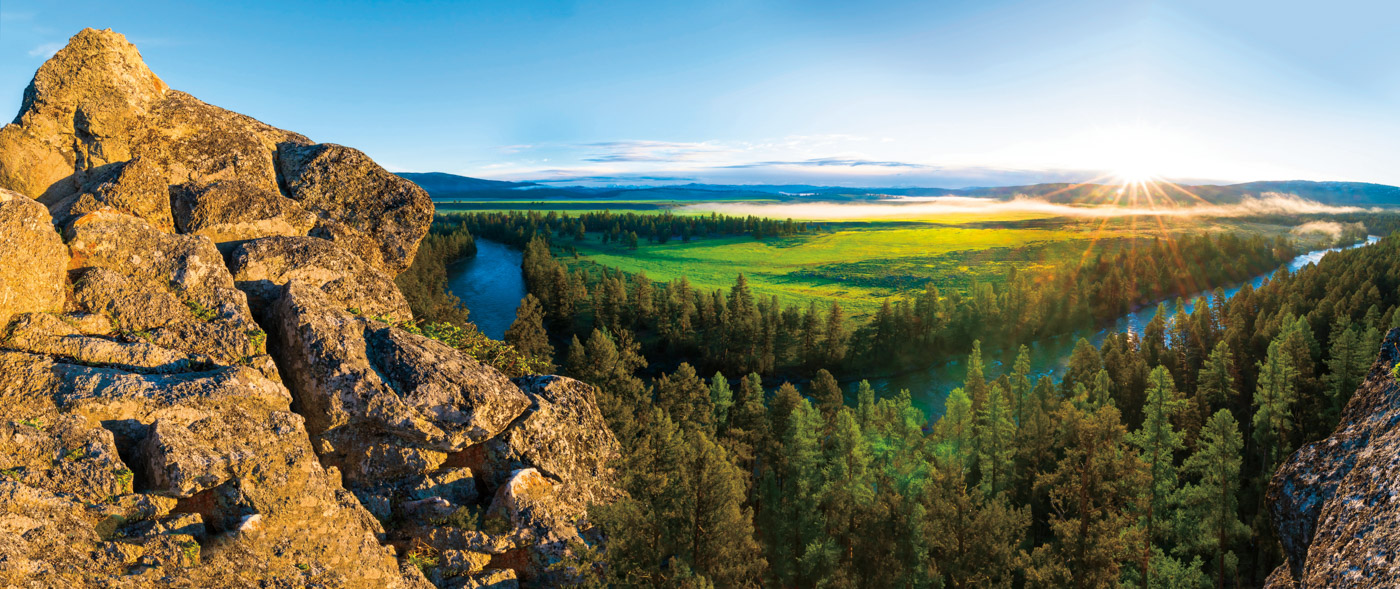
“We always talk about seasonality and the whole farm-to-fork movement, but [in Montana] it’s more than just a way of life,” he continues later, after we finish collecting juniper and stop to admire the width of a two hundred-year-old pine tree—the inside of which, he tells me, has an edible sugarcane-like membrane.
He points out a mountain ridge in the distance. “It takes about thirteen miles to get up to the top [there] and when you do, you start to feel the environment. Immediately, your survival instinct kicks in and you have to know what’s around that can be eaten,” he says.
Through its rugged beauty Montana communicates the truth of food in a way that other places only hint at: a plated meal might be beautiful enough to ‘gram, but it also needs to keep us alive. This is Big Sky Country, after all. It’s where Lewis and Clark famously sought the Northwest Passage and sprawling plains gather herds of wild elk and bison. Here, you’re acutely aware that your skin is soft and easily pierced or that three layers of leggings are needed to protect from sub-zero wind chills. To that respect, foraging isn’t a fad.
“I would encourage everyone to forage,” Jin says. “If only to better understand [your] region and the edible tapestry that’s around you, no matter where you live.”
However, he’s quick to caution that foragers should do their research, since there are many lookalikes for what can seem obvious finds. It’s also important to gather sustainably and responsibly so that ingredients can continue to be harvested in the future.
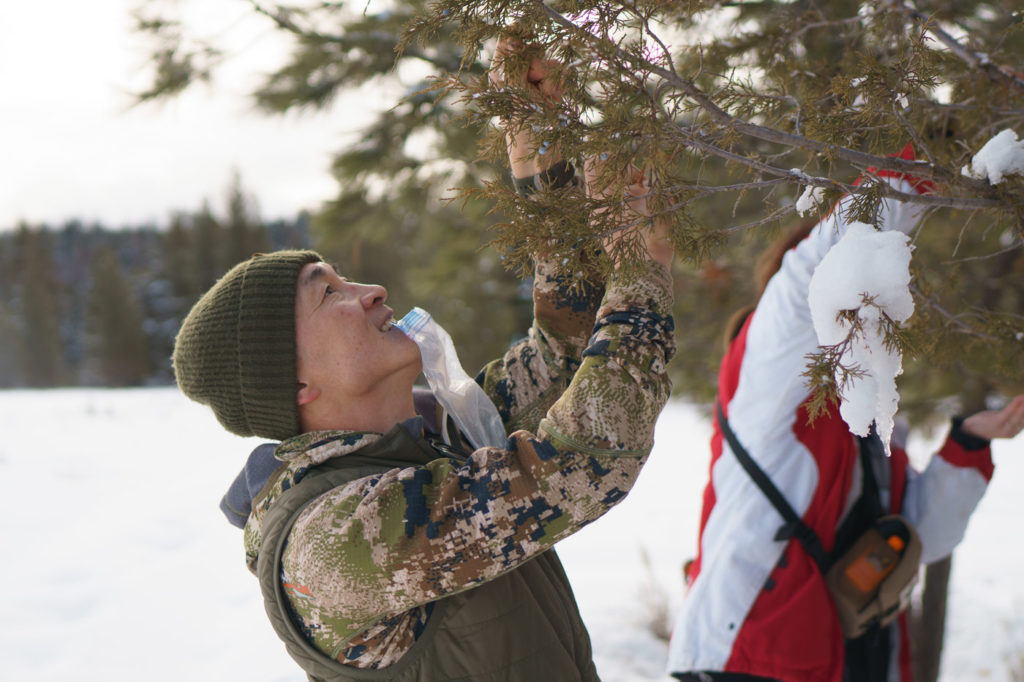

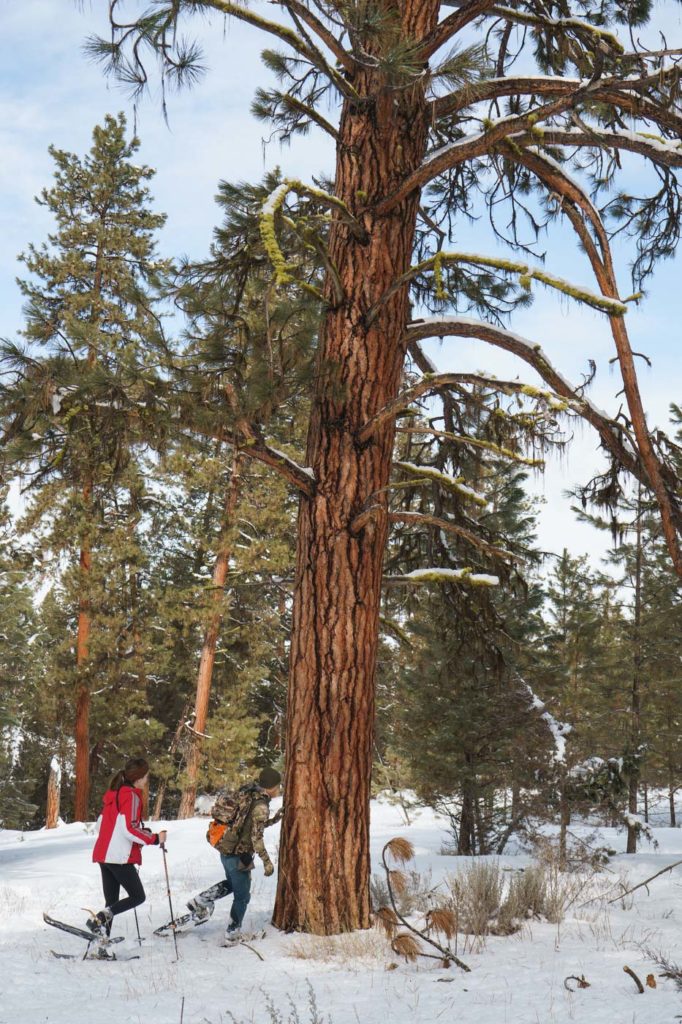

While days at Paws Up are marked by a mindset of doing less to do more, discovery is also a key component, a philosophy emphasized with the food. Throughout the year, Paws Up invites distinguished chefs, winemakers, and personalities like Chefs Brooke Williamson and Neal Fraser, or host of Somebody Feed Phil, Phil Rosenthal, out to the ranch for thematic events centered around topics ranging from Californian cuisine to a spotlight on “The Wonder Women of Food and Wine.”
By the end of our snowshoeing expedition, Jin has already mentioned making pancakes from cattails and using pine tree lichen as a foolproof kindling source. But the most surprising he’s cooked in Montana, the Camas lily bulb, comes along with its own legend.
“I don’t know how true this is, but the story goes that Lewis and Clark came over [to this part of Montana] and thought they ran into the ocean because all they could see was a field of blue from the distance,” he tells me. “All the bulbs that were coming up were the Camas lily bulb.”
The Camas lily bulb is a tuber very similar to a potato, Jin explains, but with a higher starch and astringent quality. It needs to be properly cooked slowly over light coals so as not to cause digestive problems. The trick is in its harvesting, which requires staking only the blue bulbs based on where the flowers bloom, waiting until after the flowers die to dig up the bulbs from underground. Be warned, though, that the Camas lily bulb comes in several varieties and the yellow flowers are known to be somewhat poisonous.
“If you mark the wrong one once the flowers drop,” Jin laughs, brushing off the danger with the ease of a cowboy. He assumes a healthy kind of spirited adventure that feels appropriate at Paws Up, and at any interface where man meets nature. To know the wilderness is to know where we began.
Welcome to Montana.
Editor’s Note: This story was made possible through the collaboration of The Resort at Paws Up who accommodated lodging and travel.





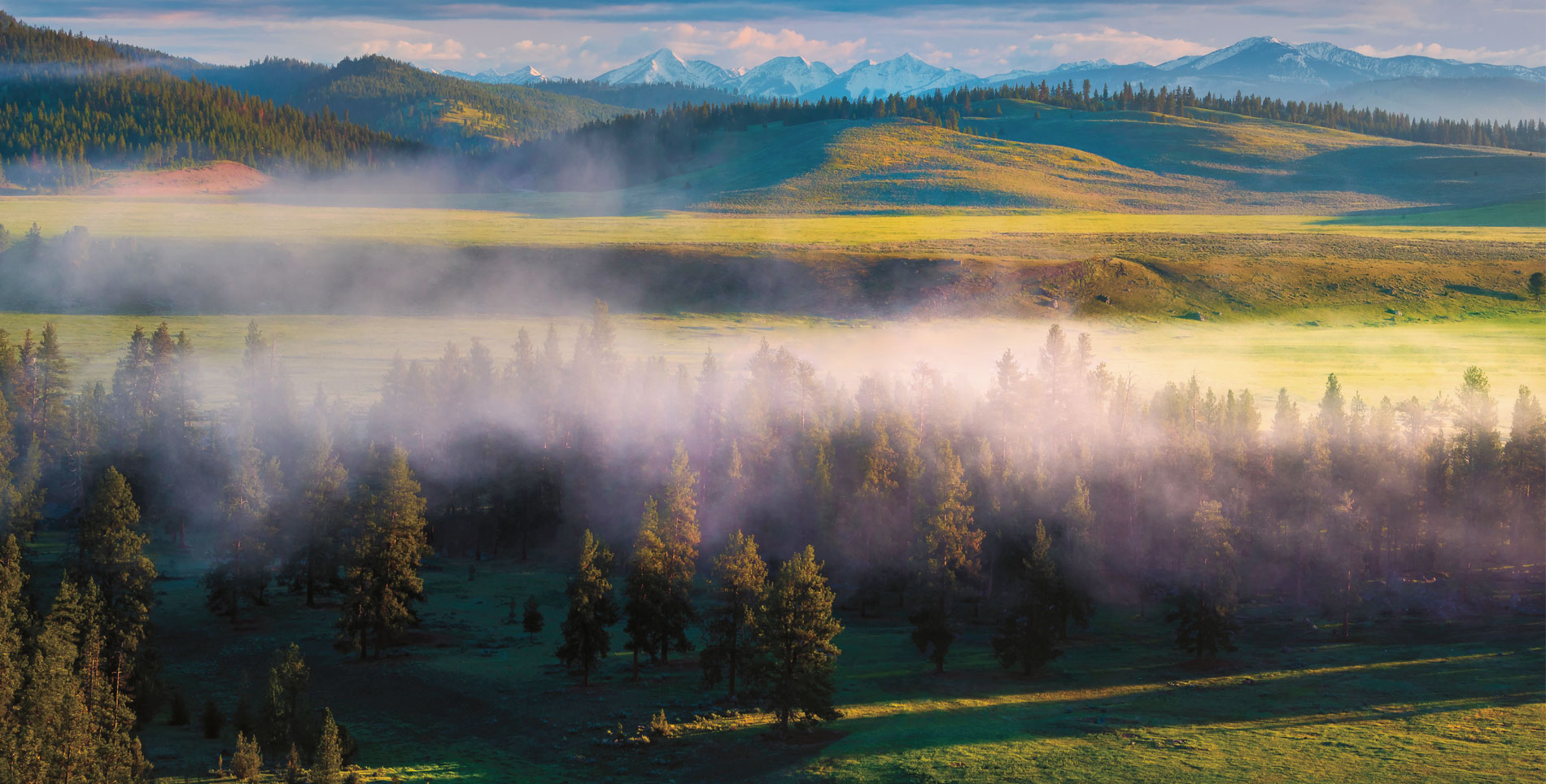

Our comments section is for members only.
Join today to gain exclusive access.